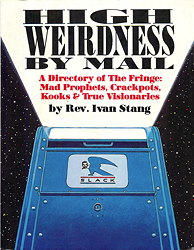Patents
Electricura Shoes
John Wilson Gibbs claimed that his patented "electric shoe" would cure rheumatism.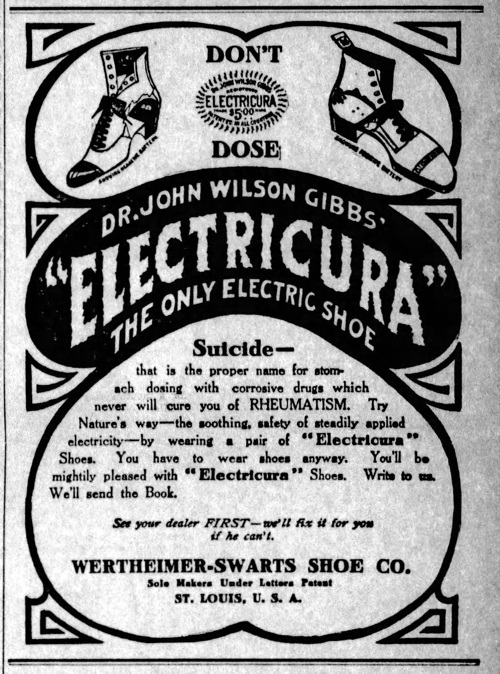
Kansas City Star - July 23, 1907
How the shoes generated electricity is explained in his 1903 patent (No. 740,548). They contained zinc and copper nails. The two metals, when combined with sweaty feet, would form a galvanic cell, producing a mild electric current.
The sole of the shoe is shown at A, and in the upper surface thereof there are driven or otherwise inset a series of nails or studs B, with each of which there is associated a similar nail or stud C. The studs of the series B are preferably of zinc and those of the series C preferably of copper, thereby providing pairs of elements of dissimilar metals or opposite in sign such that when contacted with by the foot of the wearer from the influence of the warmth or moisture of the person or for other reasons an electric current will be generated, passing from one element to the other through the body of the wearer. The medical and therapeutic effects of such a current are well known, and I claim herein only the specific construction of the means for obtaining such a current.
What he doesn't mention is that the metals would quickly corrode, at which point the electricity would stop. Not that such a tiny amount of electricity would have had any therapeutic effect anyway.
Of course, this was back in the era when adding the word "electric" to any product was a sure way to give it more consumer appeal. A long time ago I had a brief article published in Smithsonian magazine in which I gave some examples of this phenomenon.
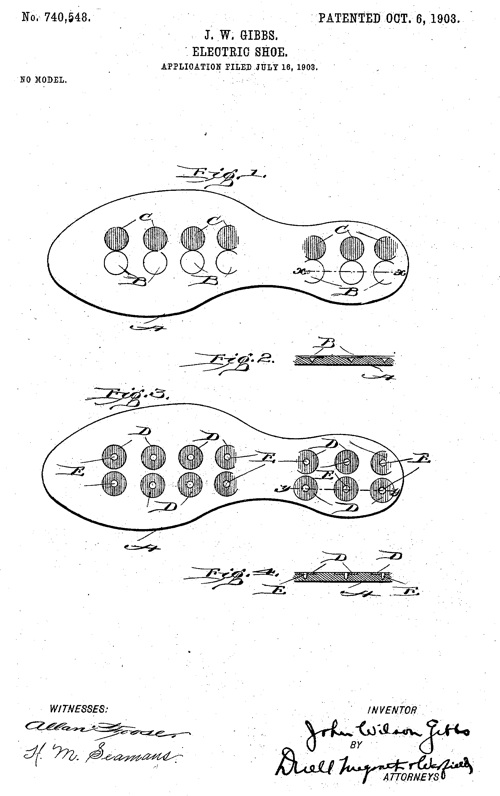
Posted By: Alex - Mon Mar 11, 2024 -
Comments (3)
Category: Patents, Shoes, 1900s
Humanoid Hugging Assembly
Walton Richardson of Murfreesboro, Tennessee was recently granted a patent (No. 11865695) for a "humanoid hugging assembly."The headless, animatronic torso says phrases such as, "I know you need a hug," "Come get a hug," and "You are special." When someone approaches it spreads its arms invitingly, and then it hugs them.
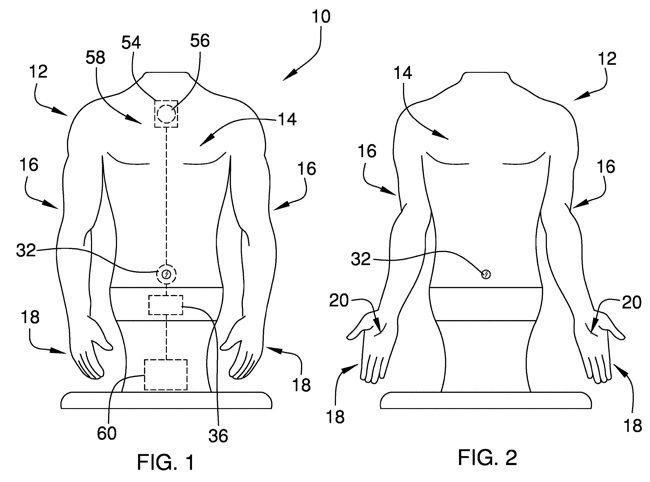
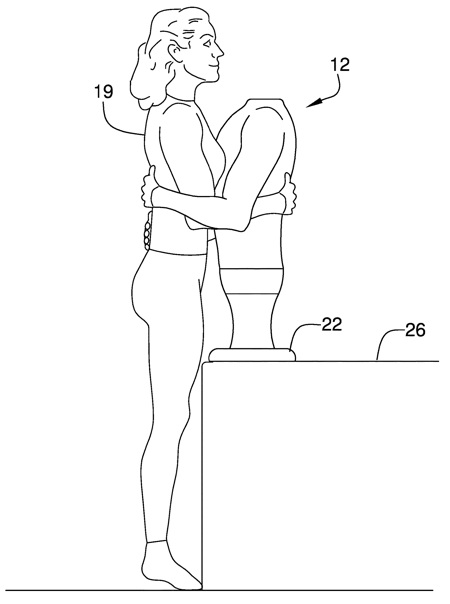
Posted By: Alex - Sat Mar 09, 2024 -
Comments (2)
Category: Patents
Special Driver Gloves for Signalling
Full patent here.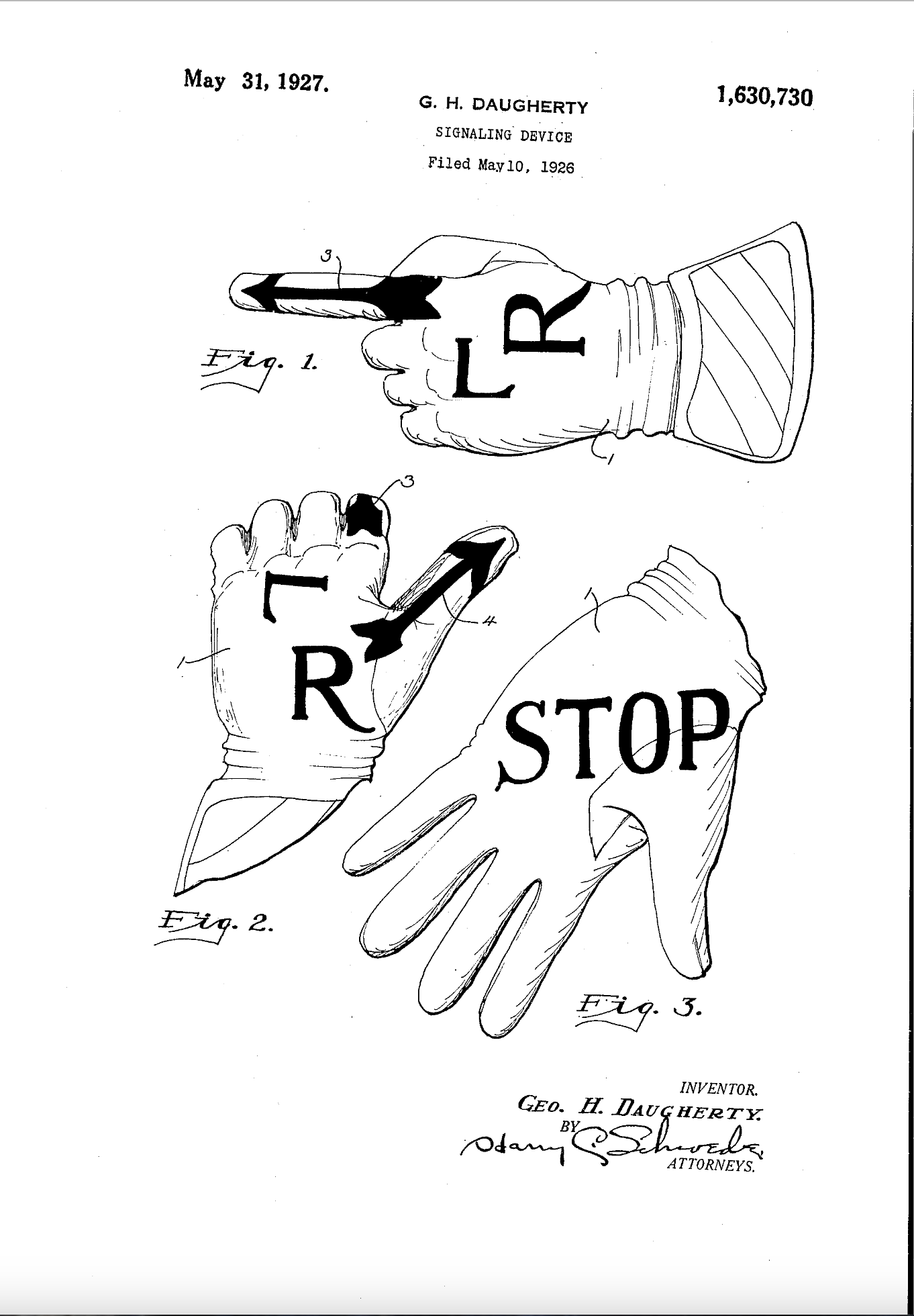
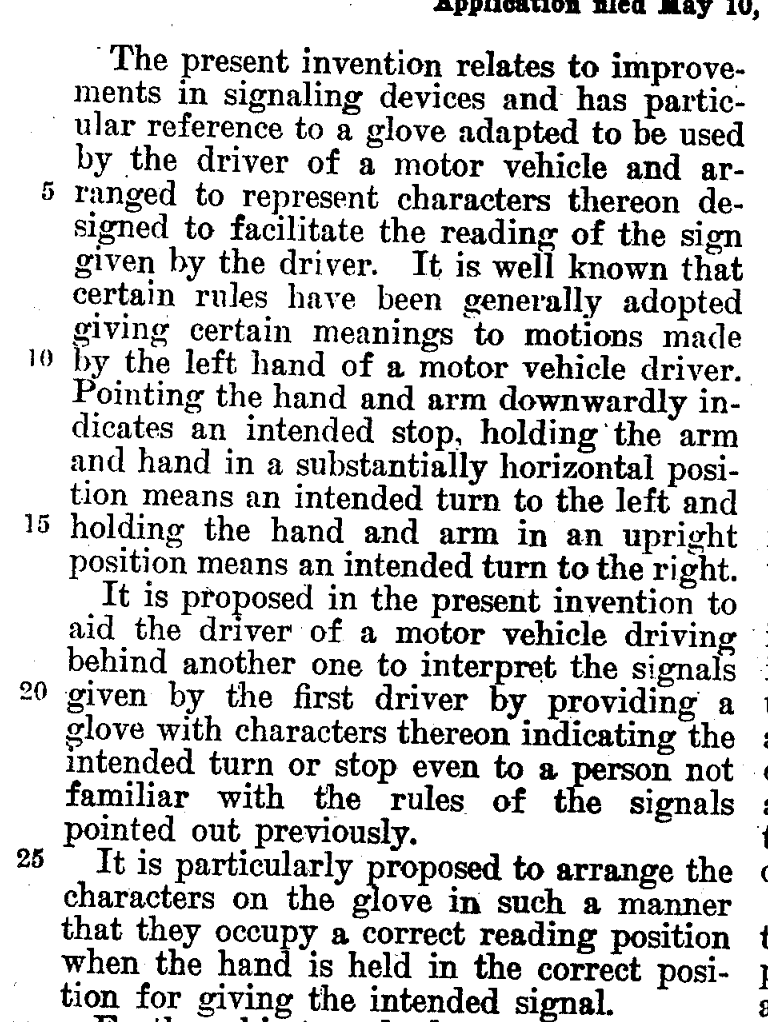
Posted By: Paul - Sat Mar 02, 2024 -
Comments (0)
Category: Inventions, Patents, Signage, 1920s, Cars
The Sony SmartWig
Sony was granted a patent for its "SmartWig" in 2016, but, to date, it doesn't seem to have brought the device to market.The idea was that a person could pair their smartphone with the wig and then receive "tactile feedback" (such as a vibration) when they received a text or email.
But that was just the tip of the iceberg. The SmartWig had many more potential uses, such as the following:
I imagine it would be a lot more difficult to aim a laser pointer with your head rather than your hand. Not to mention it would look bizarre.


#40 represents the possible location of a laser pointer
Posted By: Alex - Sat Feb 24, 2024 -
Comments (1)
Category: Technology, Patents, Hair and Hairstyling
Harold Tifft’s Portable Nuclear Bomb Shield
Harold Tifft claimed that his portable shield would "protect the wearer against heat, atomic radiation, atomic fall-out and flying debris in the event of nuclear warfare." When not in use it fit inside a carrying case, but when needed it could be rapidly assembled into a full-body shield. From his patent:In his patent he never mentioned how much the thing weighed. Carrying the thing around constantly would surely have been a challenge.
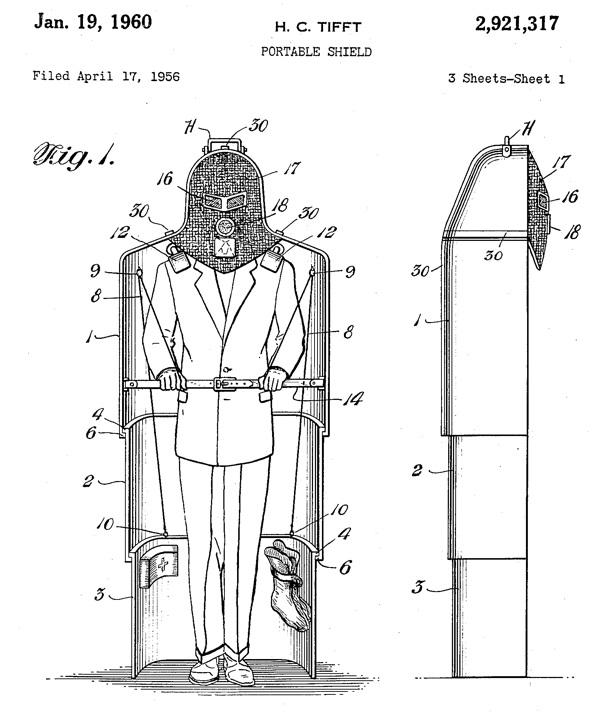
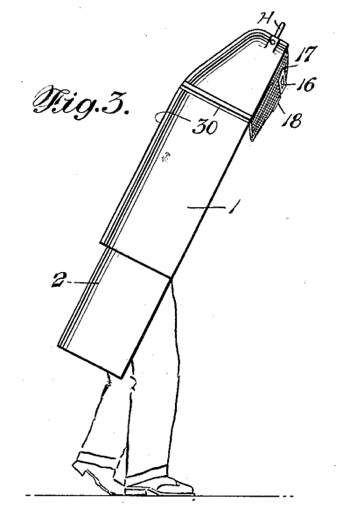
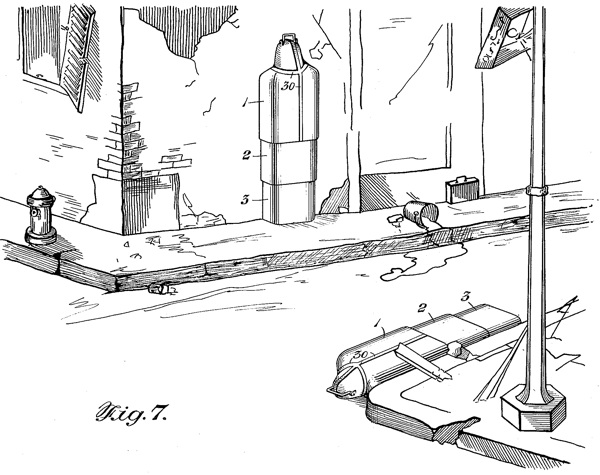
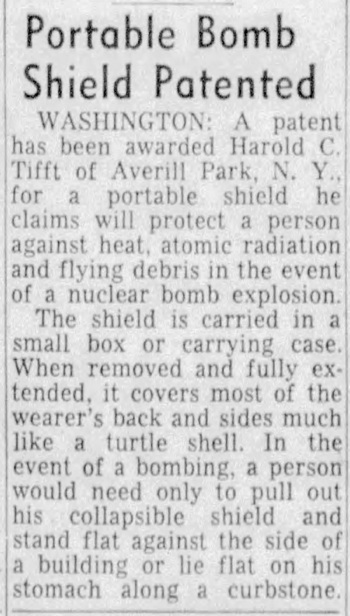
Cincinnati Post - Jan 26, 1960
Posted By: Alex - Mon Feb 19, 2024 -
Comments (3)
Category: Patents, Atomic Power and Other Nuclear Matters, 1960s
Anti-Bear Flamethrower
David Girag of Glendale, CA recently was granted a patent (11,877,572) for a "portable flame propelling device" to deter an attack by an animal "such as a bear, lion, dog, or human."I think this would just anger a bear, and then cause a forest fire.
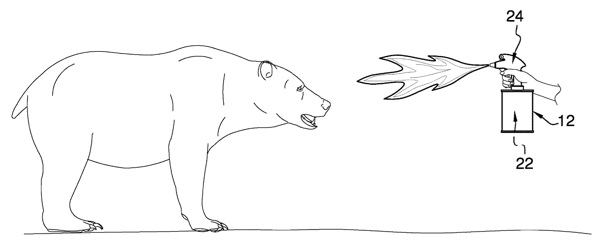
Posted By: Alex - Tue Jan 30, 2024 -
Comments (3)
Category: Animals, Fireworks and Pyrotechnics, Patents, Weapons
The Avrocar Military Flying Saucer
If only this project had succeeded, we'd all have Jetson-style flying saucers today!Here is the Wikipedia page.
But I do think the version patented by one C. P. Lent right around the same time has a classier shape.
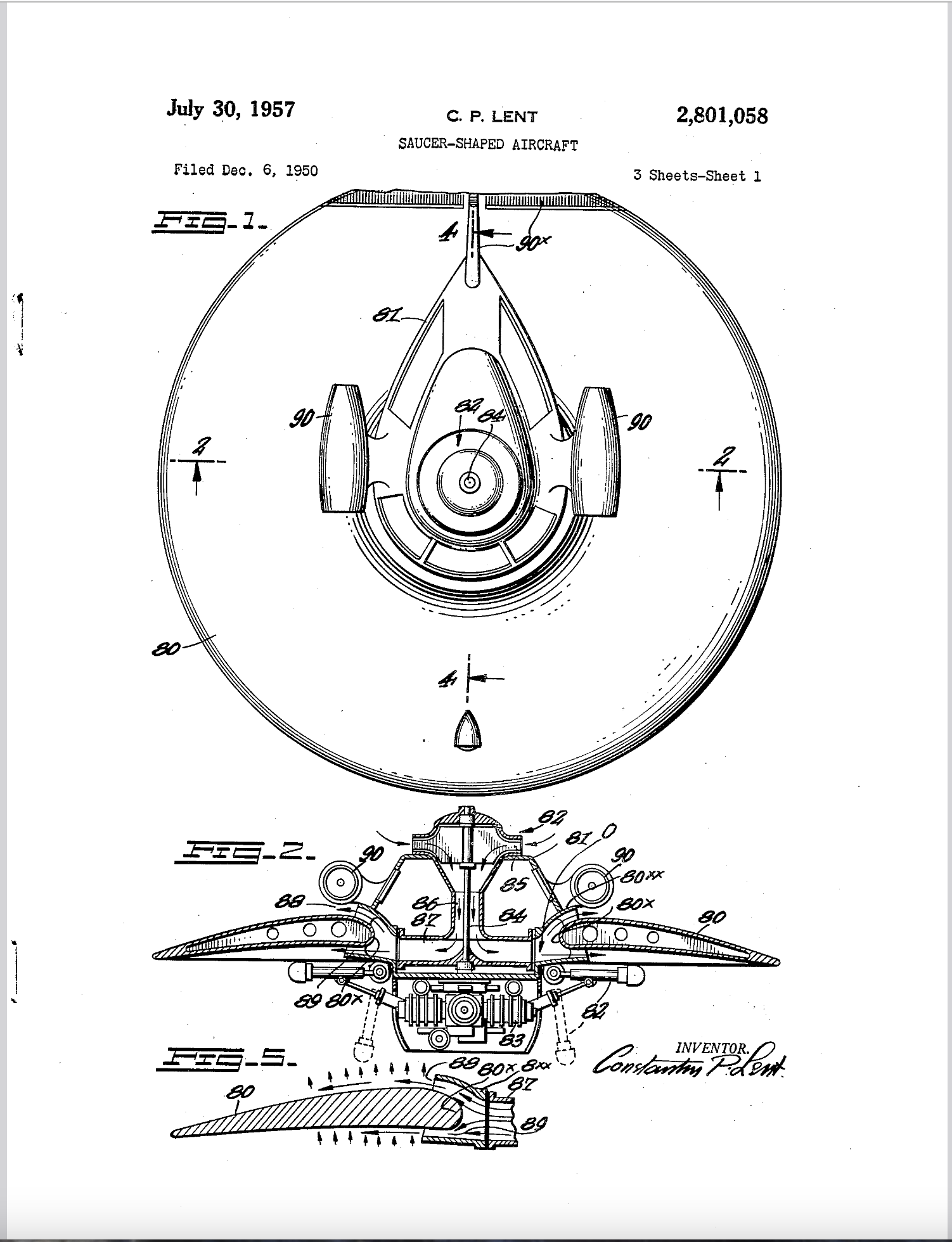
Posted By: Paul - Thu Jan 25, 2024 -
Comments (1)
Category: Flight, Military, Technology, Patents, 1950s
Mushroom-Based Air Conditioning
Researchers at Johns Hopkins have invented (and patented) a mushroom-powered air cooling system that can reduce the temperature in a semiclosed compartment by approximately 10 °C in 25 minutes. They call it the "MycoCooler." From their recent article in PNAS:It's an interesting concept, but somehow I don't think a MycoCooler would be powerful enough to beat the heat here in Arizona. (Though in the days before AC, everyone here used evaporative coolers. But they also say that it's much hotter here than it used to be... a combination of global warming and the urban heat-island effect.)
More info: Johns Hopkins, Patent No. 11871707

Posted By: Alex - Tue Jan 23, 2024 -
Comments (2)
Category: Technology, Patents
The Recording Rosary
Damon Doherty invented the "Recording Rosary" so that people could pray the Rosary while driving. As a traveling jewelry salesman he found that "Rosary beads sometimes became tangled in the gear shift as he prayed his way from city to city." So he invented a solution (Design Patent 167,827).I'm not Catholic, and know very little about praying the Rosary, but I've got a few questions about his invention.
First, is it considered okay to multitask while praying the Rosary? So it's okay to pray the Rosary while driving a car?
Second, the second article below notes that his Recording Rosary was "an actual Rosary of legitimate material." What are the 'legitimate' materials that Rosary beads can be made out of?


Boston Globe - Feb 22, 1953

Omaha Our Sunday Visitor - Mar 15, 1953
Posted By: Alex - Sun Jan 14, 2024 -
Comments (2)
Category: Religion, Patents, 1950s, Cars
Pocket Typewriter
In 1952, Maurice Julliard patented a typewriter small enough to fit inside "an average size pocket." It could be used "without any support, being simply held in the hand."His patent included a sketch of the typewriter, but I haven't been able to find any pictures of it. I'm not sure what practical use it was supposed to have, beyond being a novelty. His patent doesn't say. Would one use it to type miniature notes or manuscripts?
I noticed that it had a non-qwerty keyboard.

The Hackensack Record - July 24, 1952

Julliard's pocket typewriter wasn't the first one in existence. The book Victorian Inventions by Leonard de Vries contains an example from 1891. Though unlike Julliard's typewriter, it lacked a keyboard.
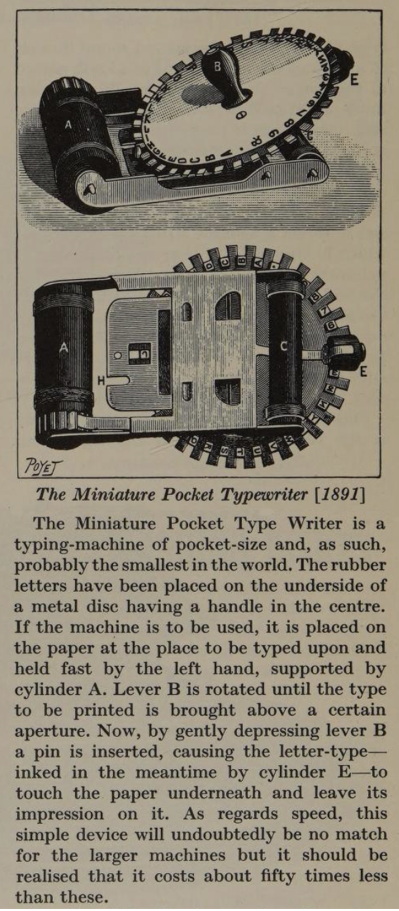
Posted By: Alex - Sun Jan 07, 2024 -
Comments (2)
Category: Technology, Patents, 1950s

| Who We Are |
|---|
| Alex Boese Alex is the creator and curator of the Museum of Hoaxes. He's also the author of various weird, non-fiction, science-themed books such as Elephants on Acid and Psychedelic Apes. Paul Di Filippo Paul has been paid to put weird ideas into fictional form for over thirty years, in his career as a noted science fiction writer. He has recently begun blogging on many curious topics with three fellow writers at The Inferior 4+1. Contact Us |

